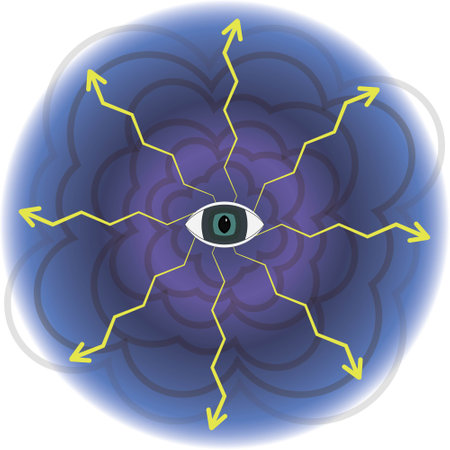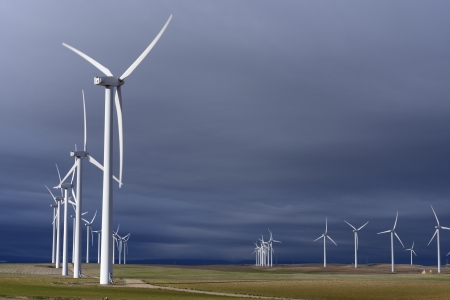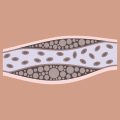Introduction: Charting the British Fascination with Human Energy
Britain’s love affair with the intangible, the mystical, and the energetic has deep roots that stretch far beyond the surface of mainstream culture. The idea of ‘aura’—that invisible field of energy believed to surround every person—has long captured British imaginations, weaving its way through folklore, literature, and eventually, fine art. While spiritualism swept across Europe in the Victorian era, it found particularly fertile ground in Britain, inspiring artists and intellectuals alike to explore the unseen layers of human existence. This fascination wasn’t merely a passing fad; it reflected a broader societal curiosity about what lies beneath appearances and how invisible forces shape our inner and outer worlds. Even today, British society remains intrigued by questions of spirit, energy, and presence—concepts that continually inspire creative expression and provoke lively debate. In this series, we’ll unravel how British artists have visualised these elusive energies, bringing the invisible into focus through colour, form, and symbolism.
Victorian Visionaries: The Early Days of Spiritualist Art
The Victorian era was a time of immense curiosity and contradiction in Britain—a period when the empire was at its zenith, yet society was gripped by a fascination with the supernatural. Spiritualism swept across drawing rooms from London to Liverpool, promising communion with the unseen and a deeper understanding of human existence. This cultural moment paved the way for a radical new approach to art, one that sought not merely to depict reality but to uncover invisible forces shaping our lives.
Amidst séances and parlour games, Theosophy emerged as a philosophical movement blending Eastern mysticism and Western esotericism. Its influence rippled through British art circles, challenging painters to visualise spiritual dimensions and energy fields. Artists began to view the canvas as more than just a surface for likeness—it became a portal for manifesting what could not be seen by the naked eye.
One of the most remarkable figures of this period was Georgiana Houghton. An early pioneer in spiritualist art, Houghton produced intricate watercolours she claimed were guided by spirits. Her works—characterised by swirling lines and vibrant colours—attempted to represent the aura and subtle energies surrounding individuals. In an age obsessed with rationality and scientific progress, her paintings offered an alternative: that creativity itself might be channelling something beyond human comprehension.
| Key Victorian Influences | Impact on Artistic Depiction of Energy |
|---|---|
| Spiritualism | Brought the concept of a human aura into popular culture; inspired artists to visualise invisible energies. |
| Theosophy | Encouraged synthesis of mystical traditions; prompted experimentation with abstract forms and symbolism. |
| Georgiana Houghton’s Practice | Pioneered spirit-guided artwork; used colour and form to suggest energetic flows around people. |
This period set the stage for later developments in British fine art, where questions about what lies beneath—or beyond—the visible world continued to intrigue both artists and audiences. The Victorians’ willingness to peer into the unknown granted subsequent generations permission to keep seeking—and seeing—human energy in unexpected ways.

3. Modern Masters: 20th Century Explorations of Psyche and Spirit
The twentieth century brought a seismic shift in the way British artists grappled with the intangible energies of the human experience. The aftermath of two world wars, coupled with radical developments in psychology and philosophy, urged artists to look inward—probing not just the body, but the mind and soul. Among those at the forefront were Cecil Collins and Francis Bacon, whose works stand as compelling visualisations of emotion, aura, and psychological turbulence.
Cecil Collins: Mysticism on Canvas
Collins approached painting as a kind of spiritual ritual, believing art could serve as a bridge between material reality and the ineffable. His figures—dreamlike, often angelic—seem to shimmer with an inner radiance, hinting at a personal cosmology where every brushstroke is charged with psychic energy. Drawing on both Christian mysticism and the British Romantic tradition, Collins’s canvases evoke not only individual emotions but also a collective yearning for transcendence. For him, aura was not merely visual; it was a lived spiritual force.
Francis Bacon: The Rawness of Being
If Collins painted the soul’s luminosity, Bacon confronted its anguish. With contorted figures trapped in existential spaces, Bacon’s paintings crackle with raw psychological energy. In his iconic series of screaming popes or distorted self-portraits, the aura is almost palpable—not as a gentle glow but as an electric charge, evidence of inner torment made flesh. His work resonates with post-war anxieties and deep introspection typical of British culture grappling with modernity.
A Crossroads of Science and Sensibility
Both artists exemplified Britain’s unique ability to fuse rigorous intellectual inquiry with poetic intuition. Their explorations were informed by contemporary debates in psychology (think Freud and Jung) and spiritualism—a cultural dialogue that shaped how aura and energy were understood in Britain at large. Whether through Collins’s mystical optimism or Bacon’s existential grit, British modernists forged new visual vocabularies for depicting what lies beneath the surface.
Legacy in British Art
Their innovations continue to influence artists today who are intent on making visible the invisible currents shaping human life. In their hands, fine art became more than aesthetic delight—it became a site for interrogating what it means to be alive, vulnerable, and perpetually charged by unseen forces.
4. Contemporary Currents: Energy, Identity, and Technology
In recent years, British artists have taken innovative strides to visualise human energy and aura, harnessing the dynamic interplay of technology, multicultural identities, and participatory art forms. Moving beyond traditional mediums, these creators employ installations, digital media, and interactive projects to explore how aura manifests in a diverse society. London’s thriving art scene, with its global influences and technological flair, serves as fertile ground for such experimentation.
Installations: Immersive Experiences of Energy
British artists like Haroon Mirza and Susan Hiller have pioneered immersive installations that capture the ephemeral qualities of human energy. Mirza’s sound-light environments invite visitors to physically engage with electromagnetic fields, while Hiller’s “Channels” transforms audience voices into flickering waves of light—literally making personal energy visible and audible.
Table 1: Contemporary British Installation Artists Exploring Human Energy
| Artist | Medium | Approach to Aura/Energy |
|---|---|---|
| Haroon Mirza | Sound & Light Installation | Uses frequencies and resonance to immerse viewers in energetic fields |
| Susan Hiller | Audio-Visual Installation | Transforms individual experiences into collective energy phenomena |
| Yinka Shonibare CBE RA | Mixed Media Installation | Juxtaposes cultural symbols to visualise the aura of hybrid identity |
Digital Media: Visualising Invisible Forces in a Multicultural Context
The digitisation of art has enabled a new generation of British artists to represent human energy in virtual realms. Interactive projections map biometric data—like heartbeats or brainwaves—onto communal canvases, highlighting both individuality and collective resonance. Projects such as “Aura Portraits” at Tate Modern use algorithms to interpret personal stories and emotions into spectral displays that celebrate Britain’s rich tapestry of backgrounds.
Table 2: Digital Media Projects Engaging with Aura in Britain
| Project/Exhibition | Description | Cultural Relevance |
|---|---|---|
| Aura Portraits (Tate Modern) | Uses AI to generate unique ‘aura’ images from participant input | Showcases the diversity of Londoners through personalised visuals |
| Breathe (Barbican Centre) | Sensors turn breath patterns into flowing digital landscapes | Merges immigrant narratives with universal life force imagery |
| The Data Body (FACT Liverpool) | Makes invisible digital footprints visible as glowing fields around visitors | Questions identity in the era of surveillance and multiculturalism |
Participatory Art: Collective Energy in Public Space
Contemporary British art often blurs the lines between creator and audience, inviting participation as a means to manifest shared energy. Community-driven murals, pop-up performances, and collaborative workshops become platforms for expressing aura not just as an individual trait but as a collective force shaped by Britain’s pluralistic ethos. Through this lens, the depiction of human energy becomes an act of co-creation—an evolving portrait of contemporary British identity.
5. Regional Nuances: How Place Shapes the British Aura
Britain’s diverse landscapes have long been more than just backdrops; they are active agents in shaping artistic interpretations of human energy and aura. From the windswept Yorkshire moors immortalised by the Romantics to the electric pulse of London’s cityscape, British artists have drawn upon their surroundings to channel and visualise what might be called the nation’s collective spirit.
The Mystique of the Moors
The rugged, untamed countryside of northern England—think Brontë country or Turner’s stormy skies—has provided fertile ground for expressing a kind of raw, elemental aura. Artists inspired by these regions often imbue their subjects with an energy that mirrors the landscape’s own drama: solitary figures dwarfed by vast skies, or spectral forms blending into mist-laden hills. The human presence becomes almost porous, absorbing and reflecting the land’s wildness. Here, aura is not simply personal but communal, shaped by weather, history, and myth.
Urban Dynamism: London’s Living Pulse
In contrast, the metropolis exerts its own magnetic force on depictions of human energy. London’s sprawl—with its ceaseless motion, layered histories, and multicultural vibrancy—has pushed artists to capture aura as something kinetic and ever-shifting. From the Vorticists’ fractured forms to contemporary street art, London-inspired works often portray individuals as nodes in a teeming network, their energies intertwined with—and sometimes overwhelmed by—the city’s rhythms. The concept of aura here is urbanised: electric rather than ethereal.
Regional Identity and Artistic Approach
What emerges across Britain is a patchwork of regional sensibilities that shape both technique and subject matter. Cornish light has encouraged luminous palettes; Scottish mists have lent themselves to introspective moodiness; industrial Midlands have sparked gritty social realism. Each locale adds its own inflection to how artists perceive and render invisible forces around the human form.
Ultimately, British fine art reveals that aura is never isolated from place. Whether in pastoral tranquility or metropolitan rush, artists translate landscape into energy—a dialogue between body and environment that continually redefines what it means to be alive in Britain.
6. Conclusion: The Enduring Allure of Aura in British Art
Reflecting on the ongoing fascination with aura within British fine art, it becomes clear that this theme resonates deeply with the national psyche. British artists, from the Pre-Raphaelites to contemporary visionaries, have continually explored the invisible energies and spiritual presence of their subjects—often as a subtle rebellion against both materialism and artistic restraint. This enduring allure is not simply about the mystical; it speaks to a distinctly British curiosity about the unseen layers of human experience and an appetite for ambiguity.
In the context of British sensibilities, depicting aura often functions as both a visual metaphor and a cultural commentary. There is an innate appreciation for nuance, understatement, and emotional depth—a tendency to see beyond surface appearances. The artistic rendering of human energy thus becomes a vehicle for exploring questions of identity, connection, and individuality in a society where reserve and introspection are prized qualities.
Looking ahead, the visualisation of human energy in British art seems poised for further innovation. As technology blurs the boundaries between physical and digital realities, artists are likely to experiment with new media—augmented reality, biofeedback-driven installations, even AI-generated interpretations of aura. Yet at its core, this pursuit remains rooted in the age-old desire to make the intangible tangible, to give form to what eludes ordinary perception.
The ongoing dialogue between tradition and experimentation ensures that aura will remain an evocative motif within British art. Whether through brushstrokes, light installations or interactive experiences, future generations will undoubtedly continue this quest to capture the essence—the energy—that animates us all. In doing so, they keep alive a uniquely British sensitivity to mystery, transformation and the quiet power of presence.


